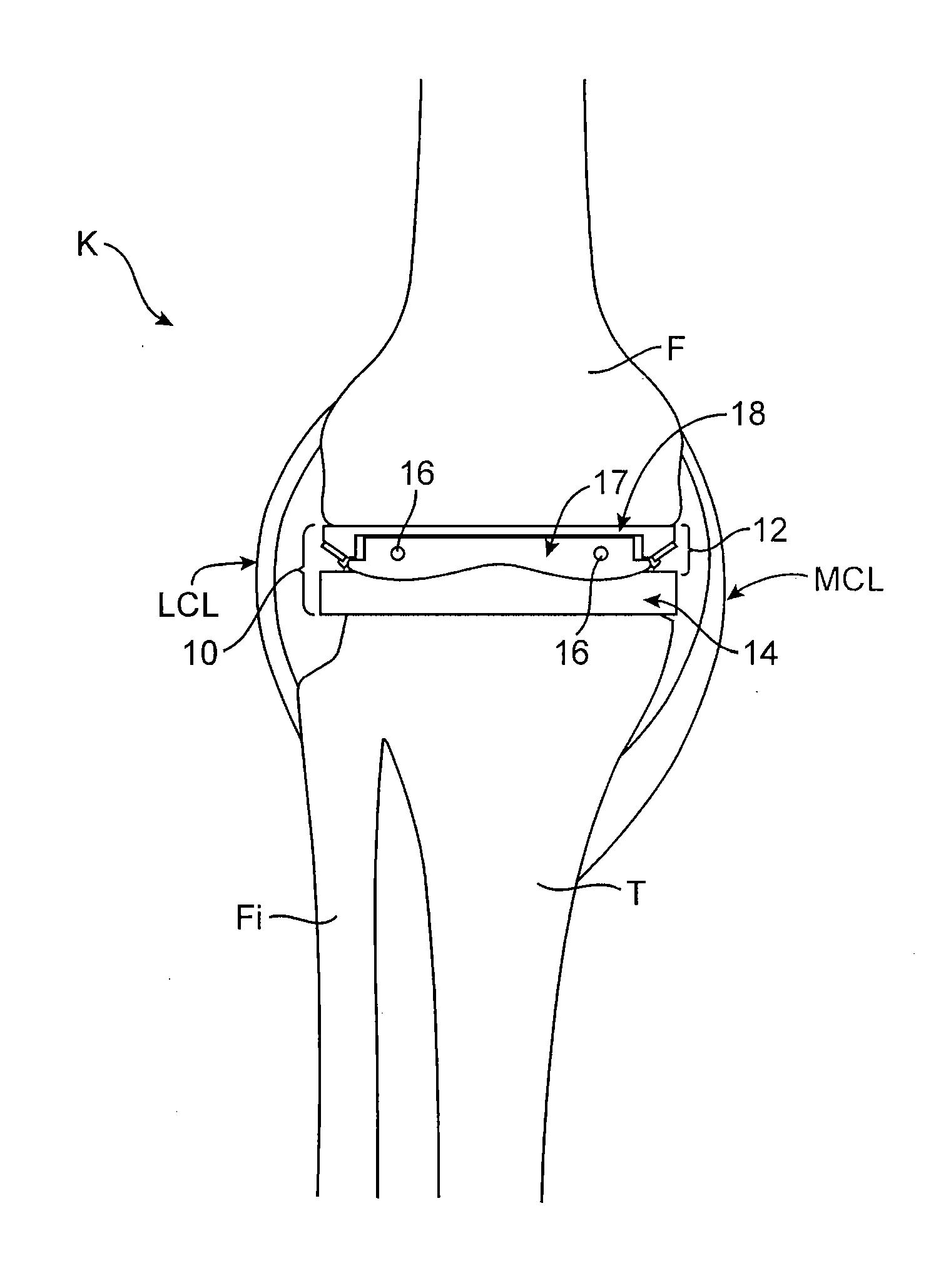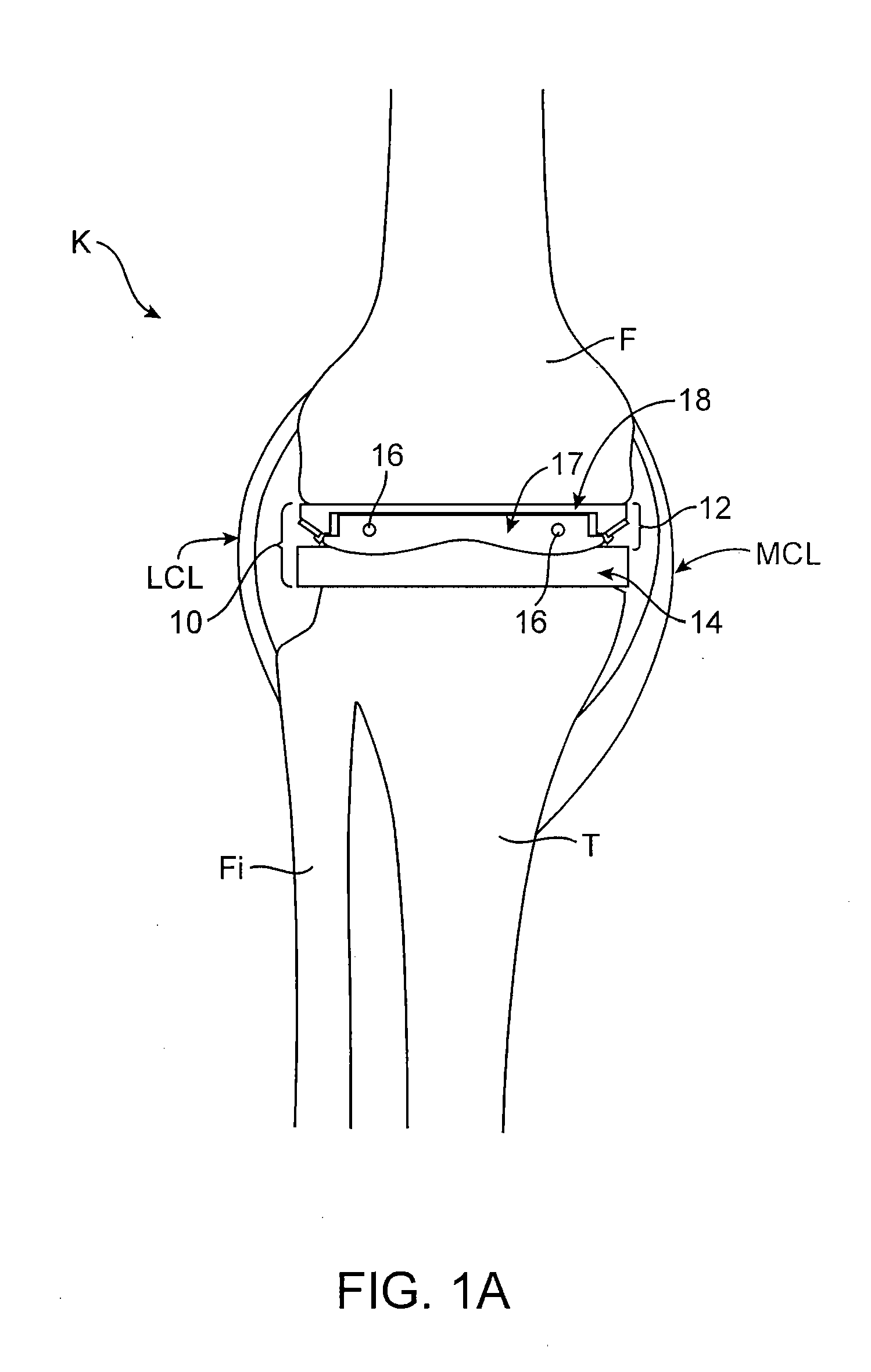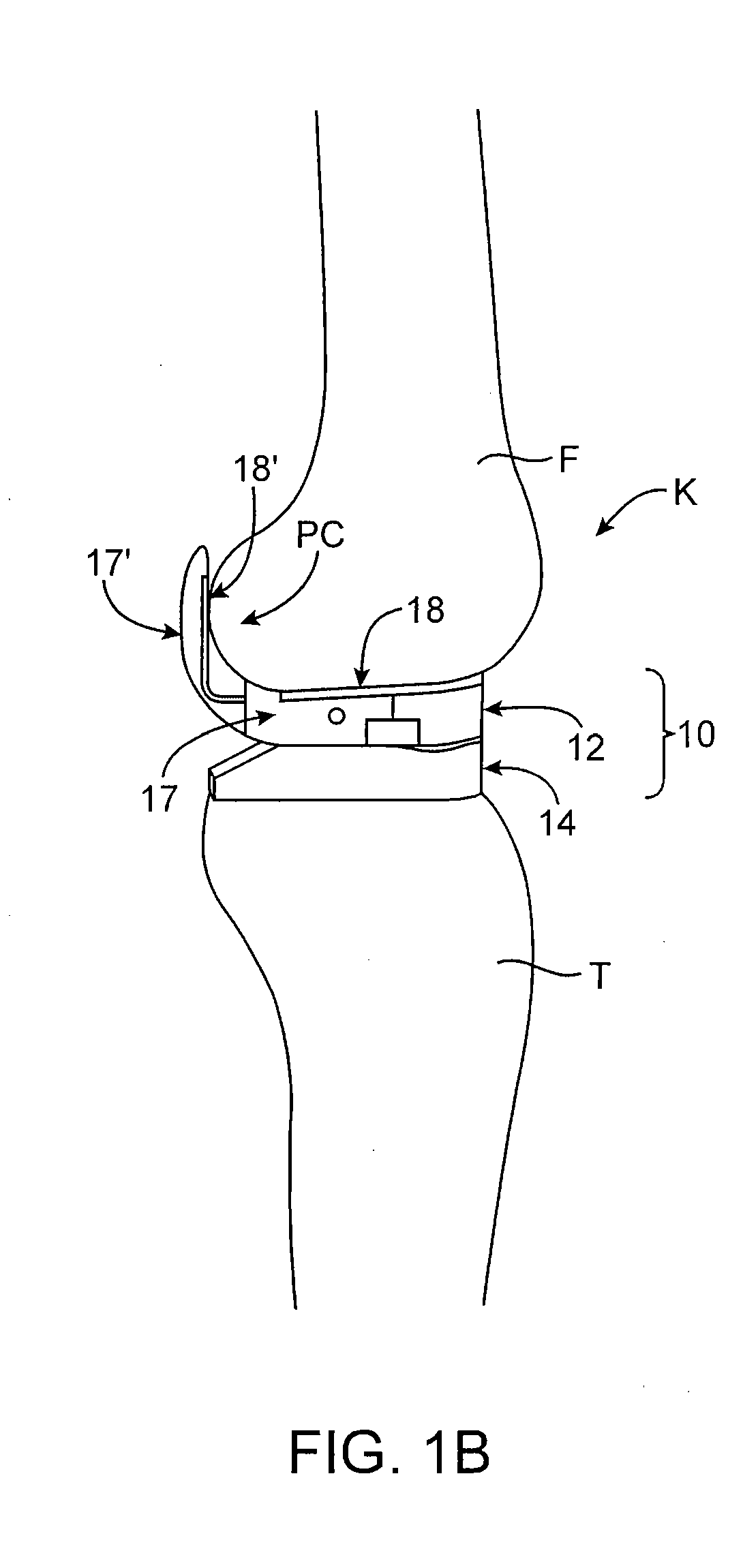Dynamic knee balancer with force or pressure sensing
a knee balancer and dynamic technology, applied in the field of medical/surgical devices, systems and methods, can solve the problems of femur and/or tibia, significant pain and discomfort, and contact with the bone, and achieve the effect of enhancing knee surgery procedures
- Summary
- Abstract
- Description
- Claims
- Application Information
AI Technical Summary
Benefits of technology
Problems solved by technology
Method used
Image
Examples
Embodiment Construction
[0048]As discussed above, the present invention provides devices, systems and methods primarily intended for enhancing total knee arthroplasty (TKA) surgical procedures. Although these devices, systems and methods are used primarily in TKA, however, some embodiments may be used to enhance other knee surgery procedures or surgical procedures on other joints, such as an elbow joint.
[0049]That being said, devices, systems and methods of the invention generally help a surgeon to balance ligament tension in a knee during a TKA procedure and thereby help the surgeon perform the TKA so as to achieve a desired ligament balance when the surgery is complete. Devices, systems and methods of the invention generally facilitate dynamic balancing of ligaments of the knee, such that these ligaments remain balanced through a range of motion about the knee. Oftentimes, such dynamic balancing helps create a prosthetic knee that has a desirable level of stability, patellar tracking and range of motion....
PUM
 Login to View More
Login to View More Abstract
Description
Claims
Application Information
 Login to View More
Login to View More - R&D
- Intellectual Property
- Life Sciences
- Materials
- Tech Scout
- Unparalleled Data Quality
- Higher Quality Content
- 60% Fewer Hallucinations
Browse by: Latest US Patents, China's latest patents, Technical Efficacy Thesaurus, Application Domain, Technology Topic, Popular Technical Reports.
© 2025 PatSnap. All rights reserved.Legal|Privacy policy|Modern Slavery Act Transparency Statement|Sitemap|About US| Contact US: help@patsnap.com



